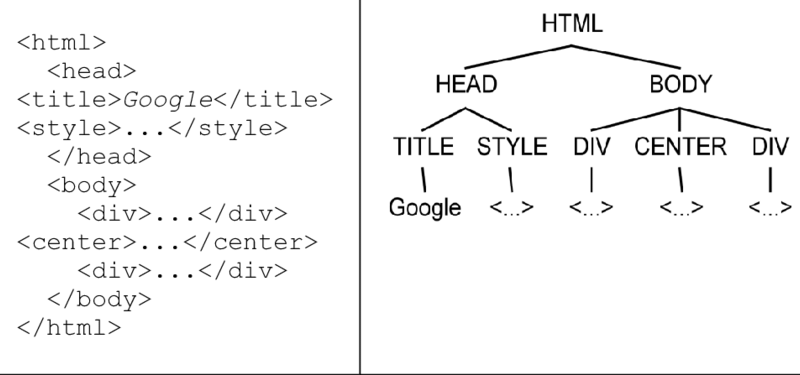HTML (Hypertext Markup Language) is the standard markup language used for creating the structure and presentation of web pages. It consists of a hierarchical structure called the DOM (Document Object Model), which represents the elements and content of a webpage. Here’s an overview of the HTML data structure:
- Elements: HTML documents are built using various elements, also known as HTML tags. Elements define the structure and content of the webpage. They are enclosed in angle brackets `< >` and usually come in pairs – an opening tag and a closing tag. Some elements may also be self-closing. Examples of HTML elements are `<p>`, `<h1>`, `<div>`, `<a>`, etc.
- Attributes: Elements can have attributes to provide additional information or modify their behavior. Attributes are specified within the opening tag of an element and consist of a name and a value. Examples of attributes include `id`, `class`, `src`, `href`, etc. For instance, `<a href=”https://example.com”>` is an anchor element with the `href` attribute set to “https://example.com“.
- Nesting: HTML elements can be nested inside one another. This hierarchical structure allows for the organization and grouping of content. For instance, a paragraph `<p>` element can contain text, links, images, or other HTML elements within it.
- Parent-Child Relationship: Within the DOM structure, elements have relationships with other elements. The element that encapsulates another element is considered its parent, and the encapsulated element is known as a child. An element can have multiple children and only one parent. This parent-child relationship creates a tree-like structure.
- Document Object Model (DOM): The DOM represents the web page as a structured tree in memory, with each HTML element as a node in the tree. It provides methods and properties to programmatically manipulate or access the elements and content within a webpage.
- Tags and Content: HTML tags specify the type of element and define its behavior. They are essential for creating the desired structure and semantics of a webpage. Content placed between the opening and closing tags of an element defines the actual text, images, media, or nested elements within that element.
By utilizing these HTML data structure components, web developers can create well-structured web pages that are easily understood by browsers and can be rendered consistently across different devices and platforms.
SHARE
